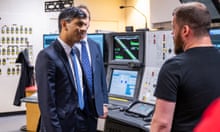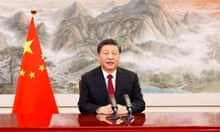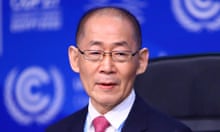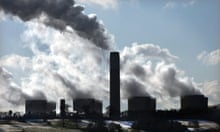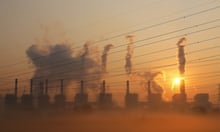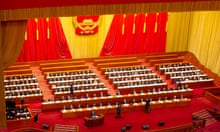Removing carbon dioxide from the air will now be essential if there is to be any chance of meeting global climate targets, a thinktank has warned.
Carbon offset markets will need to be tidied up and managed properly, as offsets will form a critical route to limiting global heating to 1.5C in line with scientific warnings, according to the Energy Transitions Commission, as switching to renewable energy alone will not produce enough carbon savings. Other methods, such as tree planting and carbon capture and storage, will also be critical.
Lord Adair Turner, the former head of the CBI and ex-chair of the UK government’s Committee on Climate Change and now chair of the Energy Transitions Commission, said carbon offsets and carbon markets were viewed with suspicion as they had been subject to mismanagement and abuse, but that well-functioning markets were possible.
“We would encourage the tidying up of what has been an area with loose standards and loose claims,” Turner said. “It would be very unfortunate to take the past problems of the carbon markets and use that to say we should not use them at all. This is potentially a very large flow of money. So we should try to make sure that financial flow, which is valuable, is provided.”
The Guardian and others have uncovered numerous instances of questionable benefits from carbon offsets offered for sale on the voluntary carbon markets, so-called because they are not formally regulated by governments.
The Energy Transitions Commission report, entitled Mind the Gap: How Carbon Dioxide Removals Must Complement Deep Decarbonisation to Keep 1.5°C Alive, examined ways of removing carbon from the air after it is emitted, in contrast to renewable energy which removes the need to emit carbon dioxide in the first place. Technologies to remove carbon dioxide, such as carbon capture and storage which requires liquefying the gas and pumping it into underground caverns, and direct air capture, using chemicals to suck carbon from the air, are still expensive.
Turner warned that these technologies should not be seen as a “get out of jail free card”, which companies and others could rely on to avoid having to switch to renewable energy or finding other ways of cutting their greenhouse gas emissions. Carbon removal could not be enough on its own, but would be needed to supplement green energy, he said.

An alternative to using these technologies is to grow trees, which absorb carbon dioxide from the air as they grow, and which scientists have said must form a key part of any strategy to tackle the climate crisis. Funding to grow forests will be hard to achieve without the use of carbon offsets, Turner said.
The ETC report found that more than $200bn (£183bn) a year in total funding would be needed to remove enough carbon to stay within 1.5C, which over the next three decades would amount to about 0.25% of global GDP.
The markets for carbon offsets today reduce global emissions by only about 0.1%, according to the ETC. Companies alone would be unlikely to fund the removals needed, and government assistance would also be needed, the report found.
Turner said carbon markets should be better regulated, to ensure that the cash they can generate is directed towards projects that provide genuine reductions in greenhouse gas emissions. That could be achieved by modelling the markets on existing financial trading, and by using modern monitoring techniques such as satellites to verify that emissions reductions have taken place, or that trees and forests were still standing.
The next instalment of the landmark four-part report by the Intergovernmental Panel on Climate Change, the body of the world’s leading climate scientists, is to be published next month. That section of the sixth assessment report, the latest comprehensive update of human knowledge of the climate crisis, drawing on the work of thousands of scientists over the past eight years, will contain sections examining carbon removal technologies and the potential for all carbon-cutting methods, from renewable energy to tree-planting.

